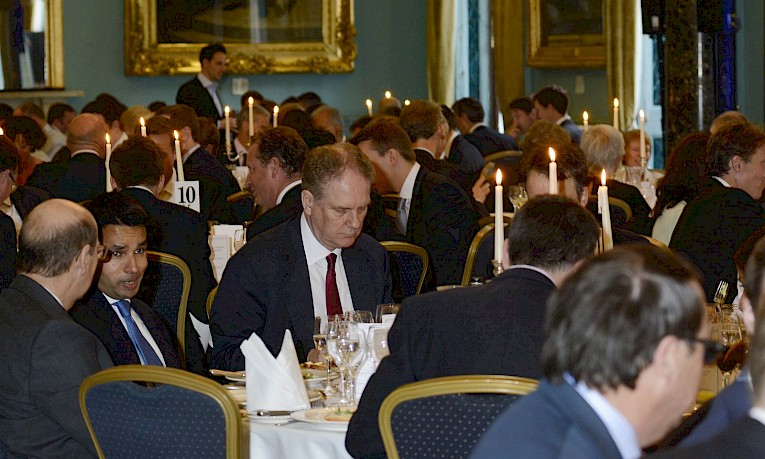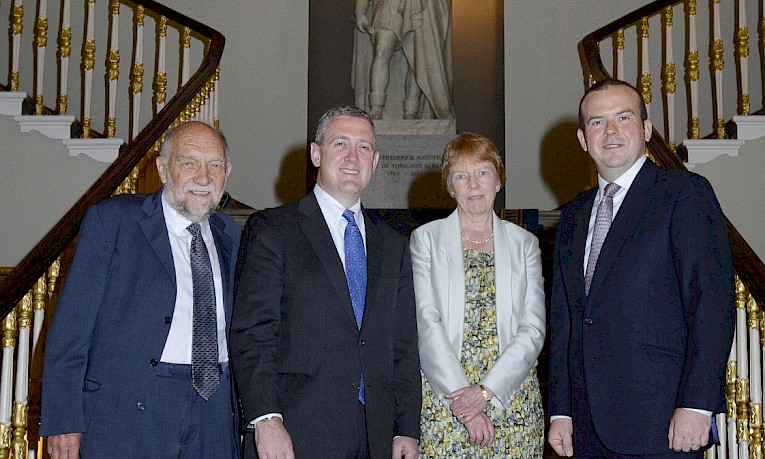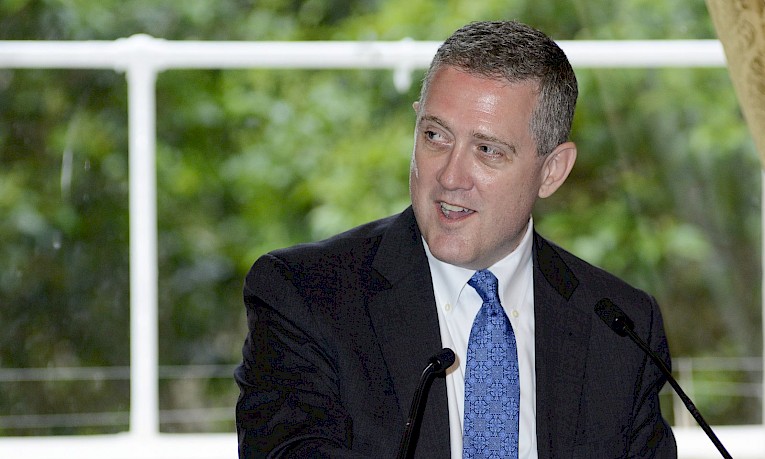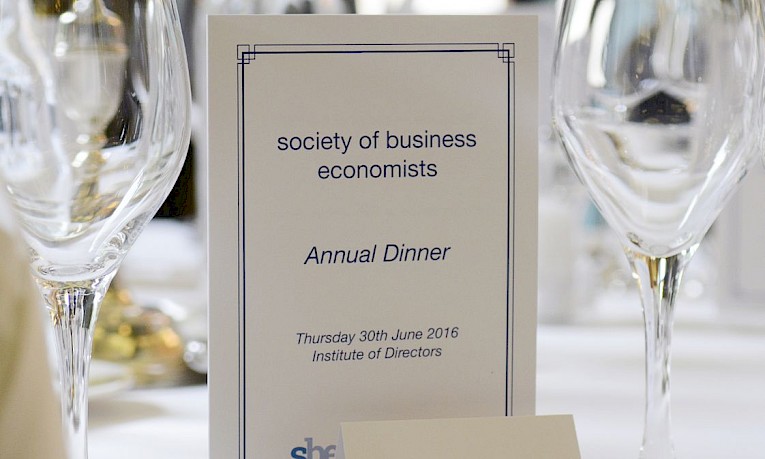30 June 2016 6.30pm
The SBE Annual Dinner 2016
Speaker: Dr James Bullard, President, Federal Reserve Bank of St Louis
Venue: Institute of Directors, 116 Pall Mall, London, SW1Y 5ED
Around 140 members and guests gathered on 30 June for the Society’s Annual Dinner in the Nash Room at the Institute of Directors. Our guest this year was Dr James Bullard, St Louis Fed President, and the evening was presided over by Sir Alan Budd, Vice President of the Society.

The retiring Chairman, Dame Kate Barker, thanked on behalf of the Society both Standard Life Investments for generously sponsoring the dinner, and MNI for their support in organising the speaker. Kate also thanked PwC for their kind sponsorship of the Rybczynksi Prize, and Sir Alan presented the winner, Toby Nangle, with a certificate and the £3,000 prize.

Kate then handed over the baton of chairing the society to Kevin Daly, co-head of CEEMEA Economics within Goldman Sachs.
James Bullard began his speech to the annual SBE dinner by claiming to be the low mystery dot in the Fed’s latest interest rate ‘dot-plot’. This was based on new and different thinking at the St Louis Fed with respect to monetary and economic policymaking. Bullard claims that the existing economic narrative - the concept of a long-run steady state - had outlived its usefulness, advocating instead a focus on “regimes” based on simple forecasts of macroeconomic outcomes over the next 2-3 years. Over the current period/regime, he sees growth and inflation of around 2% and unemployment persisting at low levels. His analysis suggests the need for very low policy rates - just 63bps according to his models.

This is an about-turn from his views at the end of last year, when in December 2015 he concurred with the need for higher rates. He believes that when the Fed did raise rates back then, markets saw the 25bps move as larger than the Fed intended. Economic data subsequently weakened in early 2016, at which point it no longer made sense to make strong economic forecasts. This was the basis of Bullard’s re-think of his forecasting methodology. The idea of regimes in forecasting is to assume that key economic indicators (inflation, growth, unemployment) are likely to persist at current levels for some time - in other words, that the current regime is presumed to last. Using this methodology it is of course impossible to forecast over long time horizons, and thus his forecasts stop after two and a half years (which explains also his unwillingness to provide a long-term interest rate “dot” at the last FOMC meeting).
He believes that key economic indicators (growth, inflation and unemployment) are currently close to levels they can remain at over the medium term. The US will, therefore, remain in its low-productivity growth regime for some time in this economic model. Of course, it could eventually switch to a high-productivity regime, but Bullard assumes the existing weak-regime persists for the purposes of policy-making. This also means that low real interest rates will be persistent, which explains his low-ball forecasts for the Fed Funds rate in the published dot plot. Still, he believes that the probability of recession is very low right now, and that there are upside risks to his (regime-dependent) interest rate forecasts. Bullard concludes by stating that this is just one style of economic forecasting model, and that it is a good idea to have the wide library of intellectual models to draw upon that Fed Presidents bring to the table.
A PDF copy of President Bullard’s speech is available for download on this page.


